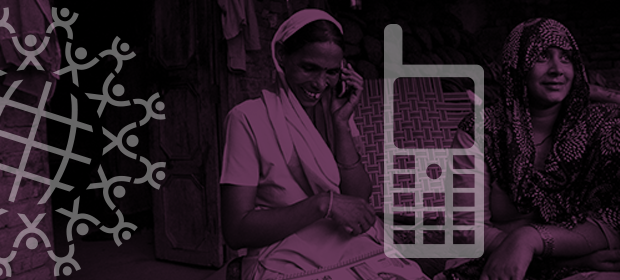Where We Work
See our interactive map


We're teaming up with CaringCrowd to bring lifesaving care to hard-to-reach families through a mobile app for frontline health workers.
For many of us, the word “crowdfunding” conjures images of tech startups or hipster bakeries, working around the traditional financing model to make their business visions a reality.
But crowdfunding holds great potential for nonprofits, too—in fact, we are uniquely positioned to finance innovative projects and programs by reaching a variety of different audiences with our most compelling stories and personal, customized appeals for small donations.
At IntraHealth International, we look to crowdfunding as an opportunity to engage new audiences in a fresh way and to fund small initiatives that show promise for influencing larger systemic change.
Small donations make a big difference in the lives of mothers and newborns in rural villages.
For example, through GlobalGiving—the first and largest global crowdfunding site to connect nonprofits and donors—we’ve provided scholarships and loans to medical students in Malawi, Ethiopia, and Kenya. We’ve enabled women in Mali to receive obstetric fistula repair surgeries and eventually rejoin their communities.
And now we’re crowdfunding on CaringCrowd—a platform dedicated exclusively to improving global public health—to bring lifesaving health care to mothers in India through a mobile app for frontline health workers.
Through this initiative, small donations make a big difference in the lives of mothers and newborns in rural villages. All the funds we collect go directly toward purchasing mobile phones equipped with mSakhi, our award-winning mobile health app, for frontline health workers. If we meet our $5,000 goal, we can purchase 50 mobile phones that will in turn help improve the lives of thousands.
Donate today and put mSakhi into the hands of a health worker.
The Deal with Crowdfunding
Crowdfunding is, without a doubt, the biggest game changer in capital funding in the twenty-first century.
It appeals to the optimist in us all. It gives donors a say into how, where, and what kind of global development happens. And it allows for personalized, democratic donor engagement that can supplement large government and foundation funding streams—and can, in fact, demonstrate a compelling case for larger investments from those institutional grant sources.
A big determiner of the success of crowdfunding lies in the ease and efficiency of the online platform. It also relies on the ever-expanding world of social media. When individual donors share a crowdfunding initiative, they become, in effect, trusted advocates and ambassadors on behalf of the organization.
Millennials—who built the crowdfunding model and have developed a level of expectation regarding engagement—are less likely to contribute to general appeals and tend to engage more with personalized, targeted campaigns that have compelling messages, clear outcomes, and a sense of direct involvement.
And millennials are in fact three times more likely than baby boomers to donate to a crowdfunding campaign, and 70% more likely than Gen Xers.
The World Bank predicts crowdfunding investments will increase to $96 billion a year in low- and middle-income countries alone by 2025. That’s a good thing since an estimated three billion people live in poverty today, 400 million people lack access to health services, and 1 in 10 lack access to safe water.
Crowdfunding offers a huge opportunity for efficient global impact to improve quality of life, including for moms and babies in even the remotest villages of India.
Get the latest updates from the blog and eNews




